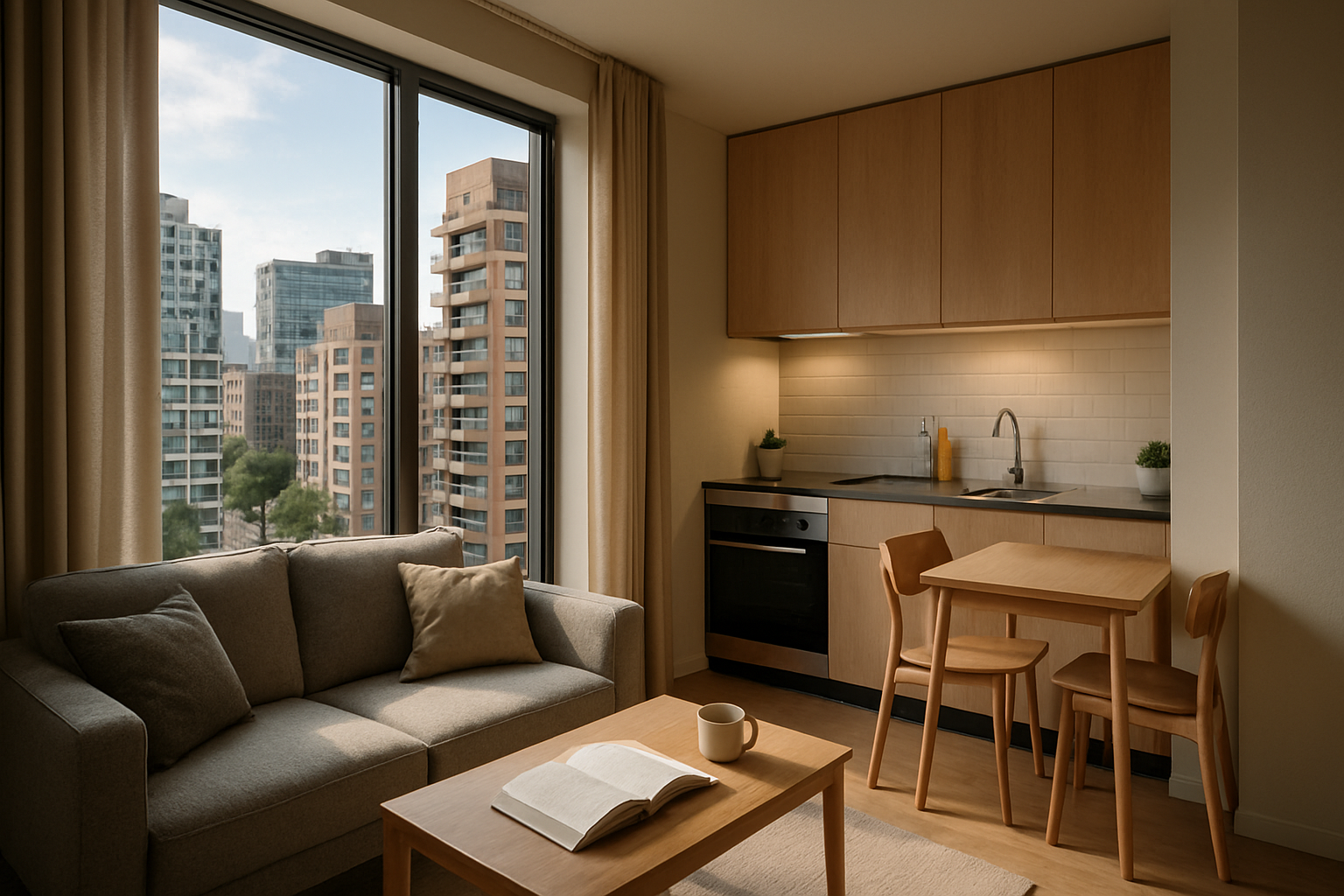Micro-Apartments: Reshaping Urban Living and Investment
The concept of micro-apartments is gaining traction in major cities worldwide, presenting a unique solution to urban housing shortages and skyrocketing real estate prices. These compact living spaces, typically ranging from 200 to 400 square feet, are redefining the way we think about urban residences. As population density increases and affordability becomes a pressing concern, micro-apartments offer a fresh perspective on maximizing space efficiency and minimizing living costs in prime locations.

Historical Context and Market Drivers
The idea of compact urban living is not entirely new. In the early 20th century, many cities featured single-room occupancy hotels and boarding houses that catered to transient workers and low-income residents. However, the modern micro-apartment trend differs in its focus on design quality, amenities, and target demographic. The current surge in micro-apartment development is driven by several factors, including urbanization, changing lifestyle preferences, and the affordability crisis in many major cities.
Design Innovations and Space Optimization
Architects and designers are pushing the boundaries of space utilization in micro-apartments. Many units feature transformable furniture, such as Murphy beds that convert into desks or dining tables, and modular storage systems that can be reconfigured based on the resident’s needs. High ceilings and large windows are often employed to create a sense of openness, while built-in appliances and custom cabinetry maximize every square inch of space. Some developers are also incorporating shared amenities like communal lounges, rooftop gardens, and co-working spaces to compensate for the limited private area.
Target Demographics and Changing Lifestyles
Micro-apartments primarily appeal to young professionals, students, and singles who prioritize location over space. These demographics often value the ability to live in prime urban areas close to work, entertainment, and public transportation. The rise of the gig economy and remote work has also contributed to the appeal of micro-apartments, as more people seek flexible living arrangements that align with their mobile lifestyles. Additionally, the minimalist movement and growing environmental consciousness have led some individuals to embrace smaller living spaces as a way to reduce their carbon footprint and simplify their lives.
Investment Potential and Market Trends
From an investment perspective, micro-apartments present an intriguing opportunity. In many cities, these units command higher per-square-foot rents compared to traditional apartments, potentially offering better returns for property owners. The smaller unit sizes also allow developers to fit more rentable units within a given building footprint, potentially increasing overall revenue. However, investors should be aware of potential risks, such as regulatory changes, shifting market preferences, and the long-term sustainability of the micro-living trend.
Regulatory Challenges and Zoning Issues
The development of micro-apartments has not been without controversy. Many cities have minimum size requirements for residential units, which can pose challenges for developers seeking to build these compact spaces. Some municipalities have begun to adapt their zoning laws to accommodate micro-apartments, recognizing their potential to address housing shortages. However, others remain hesitant, citing concerns about overcrowding, quality of life, and the potential impact on neighborhood character. Investors and developers must carefully navigate these regulatory landscapes when considering micro-apartment projects.
Impact on Urban Planning and Infrastructure
The proliferation of micro-apartments has implications for urban planning and infrastructure. On one hand, these compact units can help increase housing density without requiring extensive new construction, potentially reducing urban sprawl. They may also contribute to more vibrant, walkable neighborhoods by concentrating residents in central areas. However, critics argue that an influx of micro-apartments could strain local infrastructure, including transportation systems, utilities, and public services. City planners must carefully consider these factors when assessing the role of micro-apartments in their urban development strategies.
Future Outlook and Potential Evolutions
As the micro-apartment trend continues to evolve, we may see further innovations in design and technology to enhance the livability of these spaces. Smart home systems, for instance, could play a crucial role in optimizing the functionality of compact living areas. There’s also potential for the concept to expand beyond young, single occupants to include couples, small families, and even seniors looking to downsize. Some developers are exploring the idea of “micro-communities” that combine private micro-units with extensive shared spaces and services, blurring the lines between traditional apartments and co-living arrangements.
In conclusion, micro-apartments represent a significant shift in urban living and real estate investment. While they offer solutions to pressing housing challenges and align with changing lifestyle preferences, their long-term success will depend on factors such as regulatory support, design innovation, and market acceptance. As cities continue to grapple with housing affordability and density issues, micro-apartments are likely to play an increasingly important role in shaping the future of urban residential real estate.





